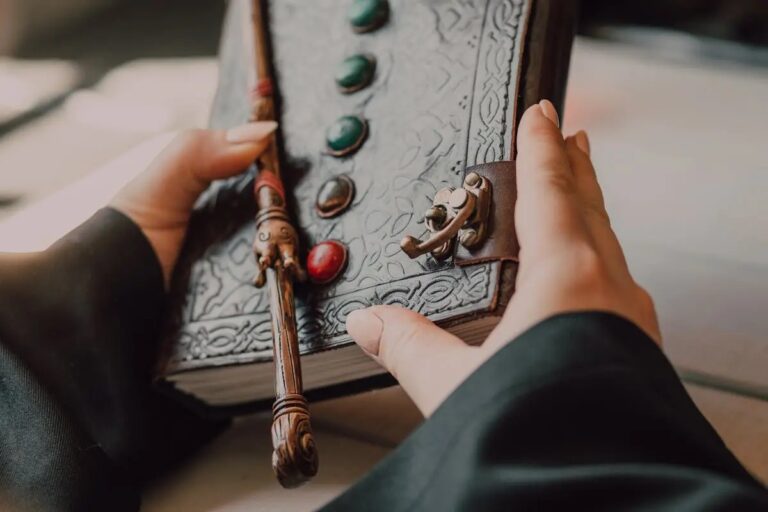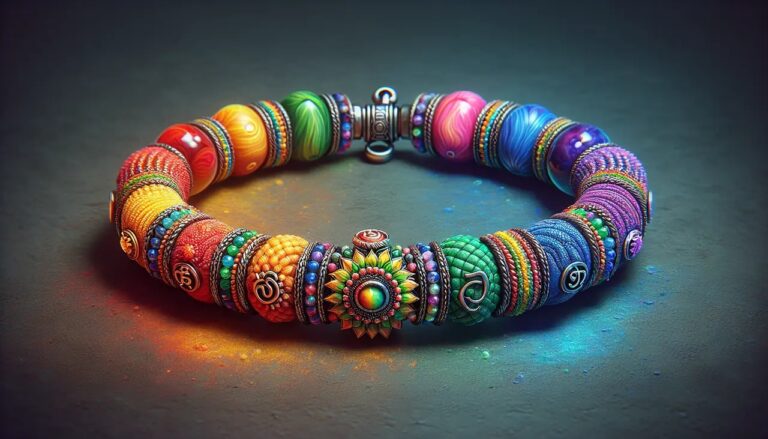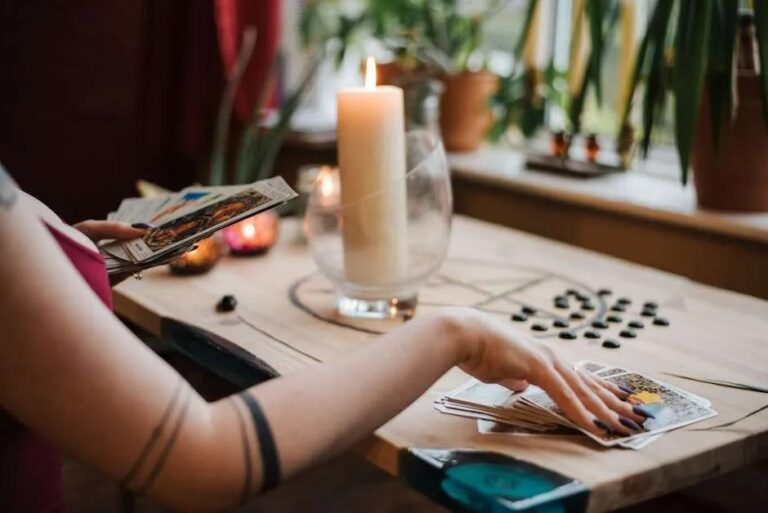How Tarot Reading Can Deepen Your Meditation Practices

The Basics of Tarot Reading for Beginners
Diving into tarot reading starts with understanding its structure. At its core, a tarot deck has 78 cards divided into two main categories: the Major Arcana and the Minor Arcana. The Major Arcana, consisting of 22 cards, reflects major life changes or deep, karmic lessons. Here, you’ll find cards like The Fool, The Lovers, and Death, each carrying symbolic meanings about life’s big moments. The Minor Arcana, on the other hand, includes 56 cards divided into four suits (Cups, Pentacles, Swords, and Wands), representing more everyday situations.
To start, focus on learning the meaning of each card. Imagine the story they tell when you see them. It’s not about memorizing definitions but feeling the energy and stories the cards want to share. Most importantly, trust your intuition. Your first feeling is often the right one.
Begin with simple spreads. A one-card daily reading can offer insight into your day, or a three-card spread could represent past, present, and future. As you get comfortable, you can explore more complex layouts. Remember, tarot is a tool for meditation and reflection. It’s not about predicting the future but understanding your path and inner self. Trust the process, and let the cards guide your meditation journey.
How Tarot Reading Can Deepen Meditation Practices
Tarot reading and meditation? Yep, they can work together better than peanut butter and jelly. Here’s the scoop: integrating tarot into your meditation routine can open up new insights and depths to your practice. Think of tarot cards as a mirror reflecting your inner world, not as predicting the future or some mystical mumbo jumbo. When you draw a card before meditating, it can set a theme or question for your session, making your meditation more focused and insightful. For example, pulling the “Hermit” could mean it’s time to look inward, or the “Tower” might suggest it’s time to confront change. This approach keeps your meditation fresh and personally meaningful. Plus, reflecting on the card’s meaning after your session can help you see your thoughts and feelings from a new angle. Simple yet powerful, right? Give it a try and see where the cards lead your meditation journey.
Selecting the Right Tarot Deck for Your Meditation
Choosing the right Tarot deck is crucial. It’s like picking a meditation buddy. Look for a deck that speaks to you. The images should resonate, drawing you in. There’s no one-size-fits-all. Beginners might lean towards decks with a guidebook. This helps understand the cards’ meanings, enhancing your meditation. Consider the Rider-Waite deck; it’s well-loved for its clear symbolism. Yet, if your gut pulls you towards a different deck, listen. Your connection with the deck amplifies your meditation experience. It’s about the vibe you get, not just the look. Trust your intuition here; it knows what’s best for your journey.
Creating a Meditative Space for Tarot Reading
Creating a meditative space for Tarot reading is just as important as the reading itself. Think of it as preparing the stage for an insightful performance. The environment where you read your Tarot cards should invite calmness and clarity, allowing you to connect deeply with the cards’ messages. Start by choosing a quiet spot where interruptions are minimal. Lighting can make a big difference; soft, natural light or candlelight can create a serene atmosphere. Next, consider the seating. Comfort is key, so opt for a cushion or a chair that supports a relaxed posture. Incorporating elements like plants or a small fountain can bring in a sense of nature and tranquility. Lastly, set an intention for your reading space. This could be a simple statement or a ritual you perform before each reading, like lighting a candle. By doing so, you mentally and spiritually prepare yourself for the insights the Tarot cards have to offer. Remember, the goal is to create a space that feels safe and sacred, a haven for your mind to quieten and your intuition to speak louder.
Step-by-Step Guide: Integrating Tarot into Your Meditation Routine
To weave tarot readings into your meditation routine, start simple. Begin with a clear intention of what you aim to discover or feel. This could be insights into yourself, guidance for the day ahead, or answers to a lingering question. Grab your tarot deck, and here’s how you go about integrating tarot into your meditation:
- Find a Quiet Spot: Choose a peaceful area where you won’t be disturbed. This setting helps in creating a sacred space for your practice.
- Set the Mood: Light some candles, dim the lights, or use incense to make the atmosphere more conducive to introspection and relaxation.
- Start with a Meditation: Before you draw a card, spend a few minutes in meditation. Focus on your breath, inviting calmness into your body and mind. This helps in connecting deeply with your intuition.
- Shuffle and Draw a Card: With your question or intention in mind, shuffle your tarot deck. Draw a card (or more if you feel guided) to receive your message.
- Reflect on the Card(s): Look at the imagery, the symbols, and the meanings of the card(s). What insights do they bring? How do they relate to your intention or question?
- Meditate on the Message: With the card(s) in front of you, close your eyes and meditate on the message. This is where you blend the tarot insight into your meditation, pondering over how it applies to your life or the situation at hand.
- Journal Your Insights: After meditating, jot down any thoughts, feelings, or revelations that came to you. This helps in solidifying your insights and reflecting on them later.
Remember, integrating tarot into your meditation doesn’t require you to be an expert. Listen to your intuition and let the cards guide your meditation journey. It’s about enhancing self-awareness and finding deeper meanings within, so take what resonates with
Interpreting Tarot Cards for Personal Insight and Reflection
Understanding tarot cards is more than predicting the future; it’s about looking deep into ourselves. Each card in the tarot deck holds a mirror to aspects of our lives, thoughts, feelings, and the challenges we face. When you pull a card, think of it as an invite for self-reflection. The Fool might be signaling a fresh start or a leap of faith needed, while The Tower could suggest it’s time for change, to break down old structures in your life. Don’t rush. Sit with the card, let its image and meaning sink in. What feels true about its message? How does it relate to what you’re experiencing? It’s not about a one-size-fits-all meaning but what the card whispers personally to you. By merging tarot reading into your meditation, you deepen your connection with yourself, using the cards as tools for intuition and insight. This isn’t about right or wrong answers but exploring the layers of your spirit and consciousness. Listen, reflect, and let the tarot guide your meditative journey inward.
Using Tarot Reading to Set Intentions Before Meditation
Setting intentions is a powerful step before diving into your meditation session. It’s like laying down a map for where you want your mind to travel. Tarot reading, an age-old practice often seen as mysterious, can actually be a practical tool in this process. Here’s the simple reason why: tarot cards can mirror your inner thoughts and feelings. They help bring your subconscious to the surface. Imagine pulling a card like The Star, which symbolizes hope, inspiration, and renewal. This could guide your meditation towards releasing negativity and embracing optimism. Using tarot doesn’t require special skills or psychic abilities. You just need an open mind. Here’s how to do it: pick a card at random each time before you meditate, reflect on its meaning, and let that theme guide your meditation. There’s no right or wrong card to draw; it’s all about what speaks to you in the moment. This practice can deepen your meditation by making your intentions more personal and focused. So, give it a try and see where the cards lead your mind.
Overcoming Common Challenges in Tarot Reading and Meditation
Tarot reading and meditation can seem complex, but many of the challenges you face are common and can be tackled. First, it might feel hard to quiet your mind for meditation or to focus on the tarot cards. Practice makes perfect. Start small, with just a few minutes a day, and patiently increase your time. Another challenge is doubt—wondering if you’re interpreting the tarot cards correctly or if you’re doing meditation right. Trust your intuition and remember, there’s no one “right” way to do either. Lastly, finding consistency can be tough. Set a regular schedule for both practices. By overcoming these challenges, you’ll deepen your understanding of tarot readings and strengthen your meditation practice, leading to more insightful and meaningful sessions.
Conclusion: Enhancing Your Spiritual Journey with Tarot Reading
Mixing tarot with your meditation doesn’t just add a unique flair; it deepens the experience. It’s like adding spices to a dish. The benefits multiply. Tarot readings can illuminate paths and options, making your meditation more focused and intentional. You’re not just sitting in silence; you’re seeking answers and directions. With each card, think of peeling back layers of your inner self, discovering insights you’ve missed. This practice isn’t about predicting the future. It’s a tool for understanding your present, guiding you toward a more mindful and centered existence. Embrace tarot in your meditation, and watch your spiritual journey unfold with richer meaning and purpose.







Esse vel natus omnis. Hic nisi mollitia aspernatur. Et non officia laudantium maxime
In esse sunt eaque iure magni non blanditiis velit
Accusantium ipsum aut ad eveniet vero enim eveniet sed. Maxime iure quos ea facilis rerum quaerat possimus. Distinctio ducimus maxime sint in incidunt